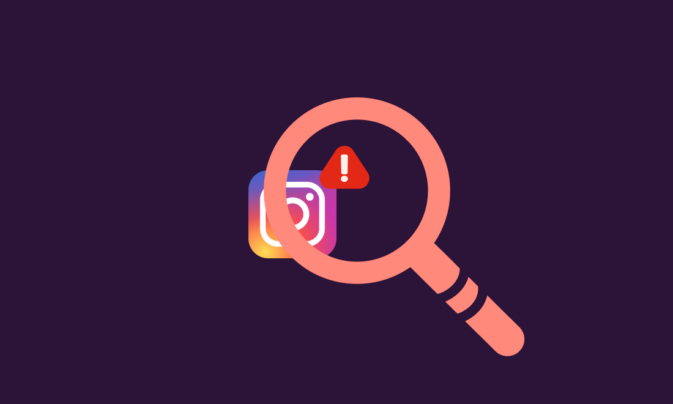Although many people enjoy watching a good mystery series, in the workplace, it’s way better to know exactly what each role should be achieving. And that’s where job task analysis comes in.
When done correctly, job task analysis helps employees and candidates to know exactly what’s expected from them, enabling the business to optimize its valuable human resources.
Along with providing the basis for job descriptions lending to successful recruitment, job task analysis also supports a detailed role framework for existing employees to help progress their career path.
Now, let’s see how your team can win with this strategic workforce planning tool.
TL;DR – key takeaways
- Job task analysis is a detailed breakdown of the main responsibilities and tasks of each role. When employees or candidates know exactly what’s needed from them, it often boosts their and the team’s productivity.
- Along with providing the data needed to create accurate job descriptions, job analysis also helps with identifying skills gaps, benchmarking performance standards, and setting fair salaries.
- You can use job task analysis in lots of ways, such as for recruitment, training, selection, succession planning, and boosting workplace safety.
- The main methods for analyzing jobs include options like observation, interviews, and task inventory.
- The steps to get started include gathering and analyzing data, identifying skills gaps, developing employee training programs, and crafting the job description.
- With Toggl Hire, your team can save time by automating the hiring process. And assess the skills of employees and candidates quickly using ready-made skills assessments.
What is a job task analysis?
Job task analysis is a tool for creating a detailed breakdown of the specific responsibilities in a role. It is a systematic procedure for researching and identifying the exact duties of a role and the tasks that make up each duty.
Through performing job task analyses, you establish the components of a role, which helps internally with employee career development and externally for accurate job descriptions that attract suitable candidates.
The goal of a job task analysis is to explain exactly what a role entails, like posting on social media twice a week — so the employee or candidate knows exactly what’s required to kick ass in that job. This is different from the how, which is the knowledge, skills and abilities, needed for the role.
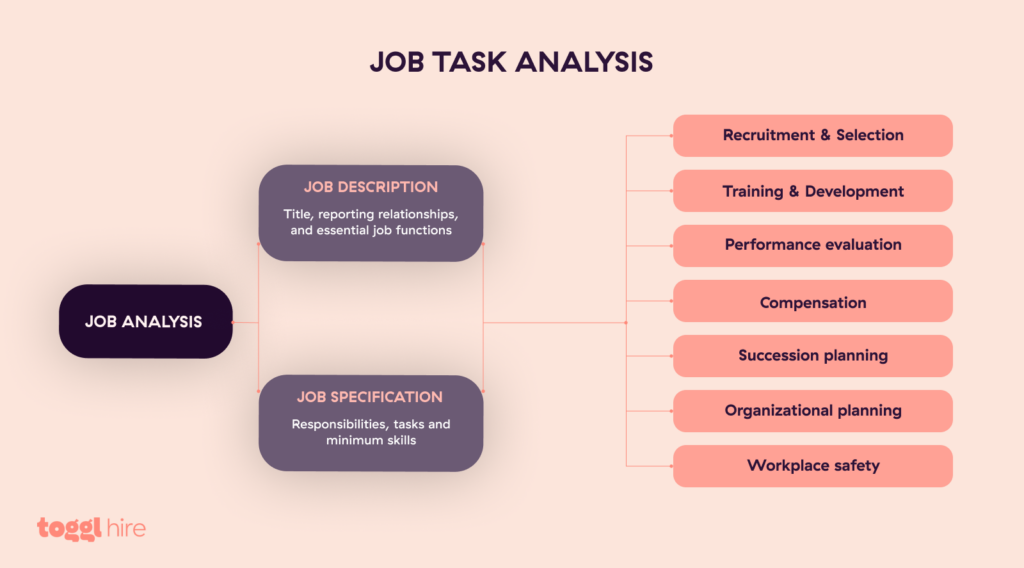
Job description vs job analysis — what’s the difference?
Right. The difference between a job description and job analysis is that a job description paints a full picture of a job opportunity, including:
- the role’s duties
- core skills and experience needed
- what the company’s all about
- what’s in it for the successful candidate
- salary and other corporate benefits
While a job analysis is a summary of the tasks and subtasks that make up a role. The findings from this analysis are included in the job description as the core responsibilities.
You might have heard of a similar concept called a competency model. To avoid any confusion, a competency model breaks down how a person performs a role. In other words, all the skills or capabilities someone needs to succeed in a particular role.
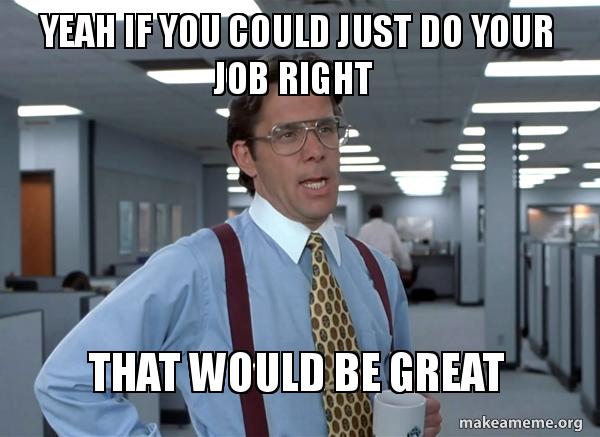
Why should you use job analysis?
HR teams use job task analysis to create a detailed description of all the tasks or duties of a role. The core reason being that it gives the necessary data to improve your HR decision-making and implement better processes — from recruitment strategies and selection to training and internal mobility.
Organizations in which HR facilitates a positive employee experience are 1.3 times more likely to report organizational outperformance.
McKinsey
The core benefits include:
- Improving the hiring process
- Benchmarking performance standards
- Setting clear criteria for fair promotion and salary decisions
- Identifying any skills gaps or training recommendations
- Providing the data to optimize the makeup of teams and boost productivity
- Supporting strategic workforce planning that improves business resilience
Job task analysis forms a solid foundation for managing the workforce more efficiently, and in doing so, improving the employee experience and overall productivity.
A few job task analyses examples
HR teams can use job analysis data in many different ways, including:
| Where | Purpose |
| Recruitment and selection | To identify the core capabilities to include in job posts, your selection criteria and which assessment tools will most suit a particular role. |
| Training and development | To assess the strengths and areas of development for current employees. You’ll have a clear benchmark to use for comparison and can easily add relevant points to their career development path. |
| Performance evaluation | To help develop performance standards for tasks employees perform, and evaluation criteria that are aligned with the specific job requirements. |
| Compensation | To determine whether an employee is being compensated fairly for a particular role, especially if the analysis reveals they’re doing many additional tasks and responsibilities. |
| Succession or organizational planning | To identify the essential competencies that ensure a successful role and include them in a succession plan for key leadership or management positions. |
| Workplace safety | To identify potential risks and hazards associated with specific duties and create safety protocols and training to keep employees safe. |
The core job task analysis methods
There are a variety of ways you can perform a job analysis. Choose which one (or a combo) would best suit the particular role you’re analyzing.
| Method of job analysis | How to implement it |
| Observation | Gather information about all the specific activities and tasks in a particular role by observing an employee currently in the role. |
| Interviews | Once you’ve observed an employee, a structured interview is a good way to follow up or get more detail on exactly what they do. You could also interview any supervisors the employee works with to gain more context from their perspective. |
| Questionnaires | If an interview isn’t possible, a questionnaire is a great alternative. That way the employee or supervisor can share the info in their own time, and you may even get more detail than with an interview. These questionnaires typically include open-ended and closed-ended questions to cover all bases. |
| Performance analysis | This approach entails analyzing job performance data, such as productivity, quality and error levels, to establish the specific tasks that should make up a role. |
| Critical incident technique | For this method, you gather info on any critical incidents (like a work accident) that happen on the job to differentiate between good or safe behavior and unethical or dangerous behavior. |
| Task inventory | Have the current employee in the role list all the tasks associated with their job and get their colleagues or supervisors to help rate the importance and frequency of each task. |
Tip: You can also encourage team leads to perform job task analysis themselves from time-to-time to continually boost productivity levels.
9 Steps to conduct successful job task analysis
Organizations that understand what their employees do every day, and structure their roles in a way that everyone is able to give their best, can maintain higher levels of morale and productivity.
Since disengaged employees cost US companies roughly $500 billion every year in lost productivity, it’s an area where HR can add a lot of value.
And the journey begins with the insights gleaned from job analysis data. So, let’s see how to get started with the process:
#1 – Establish the purpose
Kick-off by determining why you want to perform the analysis. Is it to streamline a workflow, like handling bugs in software development? Or perhaps to see whether a second designer is needed on the marketing team to manage the growing volume of work?
#2 – Choose the method of job analysis
Decide which method, or a combo of methods, best suits your work environment and the role responsibilities, such as a questionnaire if you need to get data from a busy executive.
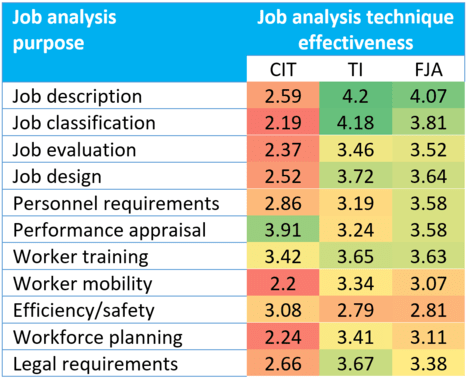
#3 – Collect data
Gather all the information you can about the job. The more sources you use, such as job descriptions, employee growth plans, observations, and industry best practices, the more context you have for your analysis, and the more impactful it’ll be.
#4 – Analyze the data
Next, you analyze the data you’ve collected to distinguish which job tasks or responsibilities are essential and which detract from the key outputs or goals of the role.For instance, a social media manager started transcribing customer interviews in addition to their main duties. You discover the transcribing task takes a lot of their time and doesn’t contribute to improving social media metrics, so you red-flag it.
#5 – Verify your findings
When you’ve completed the job analysis and analyzed the data, then you’ll need to verify your findings. You can discuss them with a current employee in the role, a supervisor, and a hiring manager. You could also compare the findings to competitors’ job ads for further confirmation.
#6 – Set out the role responsibilities and job tasks
From the info you’ve verified, you’ll now have what you need to put together a detailed breakdown of the role’s essential duties.
You can use that job analysis data to get a clear picture of the role and start to see what candidates or employees need to successfully perform the duties.
From the knowledge requirements to physical demands, day-to-day tasks, any professional and legal guidelines that apply, and the detail you need to create more accurate job descriptions.
#7 – Identify skills gaps
You can now determine if there are any skill gaps with the employees in that role by comparing the job tasks list with what they’re actually doing and the quality of their work.
Some of these gaps may be a lack of knowledge or experience, but they can also be from the fast pace of technological changes.
For example, the employee may need advanced training on how to use Google Analytics 4 (GA4).
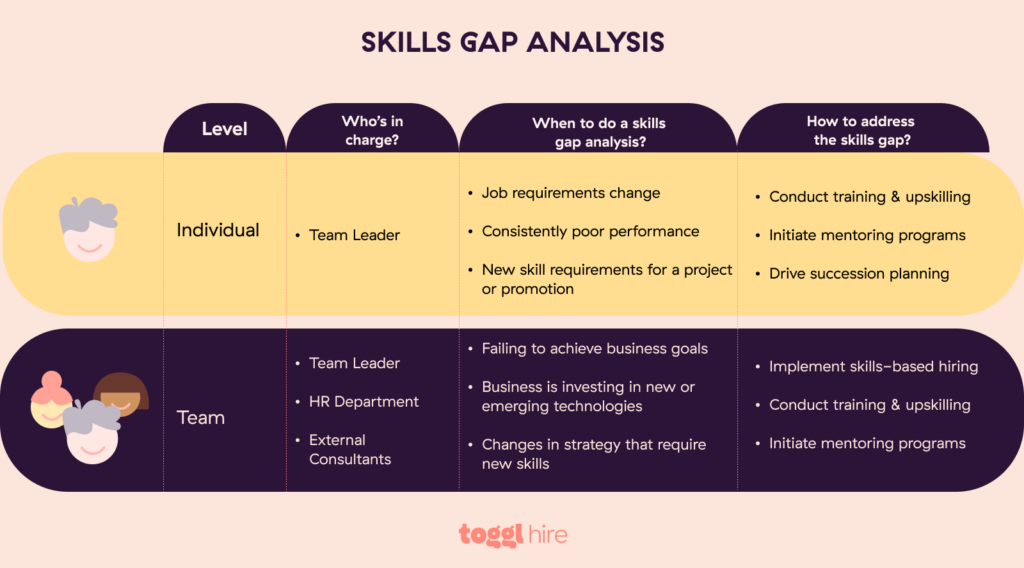
#8 – Develop employee training programs
If you see there is a skills gap, you can develop a training program for that employee to help them improve the knowledge or skills needed to perform that specific task.
Successful training tools could include:
- Online training programs
- Accredited qualifications
- Group training
- Mentorship
- Case studies
#9 – Create the job description
Now you should have all the pieces you need to develop a job description (if you’re creating a new role) that is:
- Detailed
- Accurate
- Covers the minimum job requirements and exact tasks
- Able to streamline recruiting and selection with quality candidates
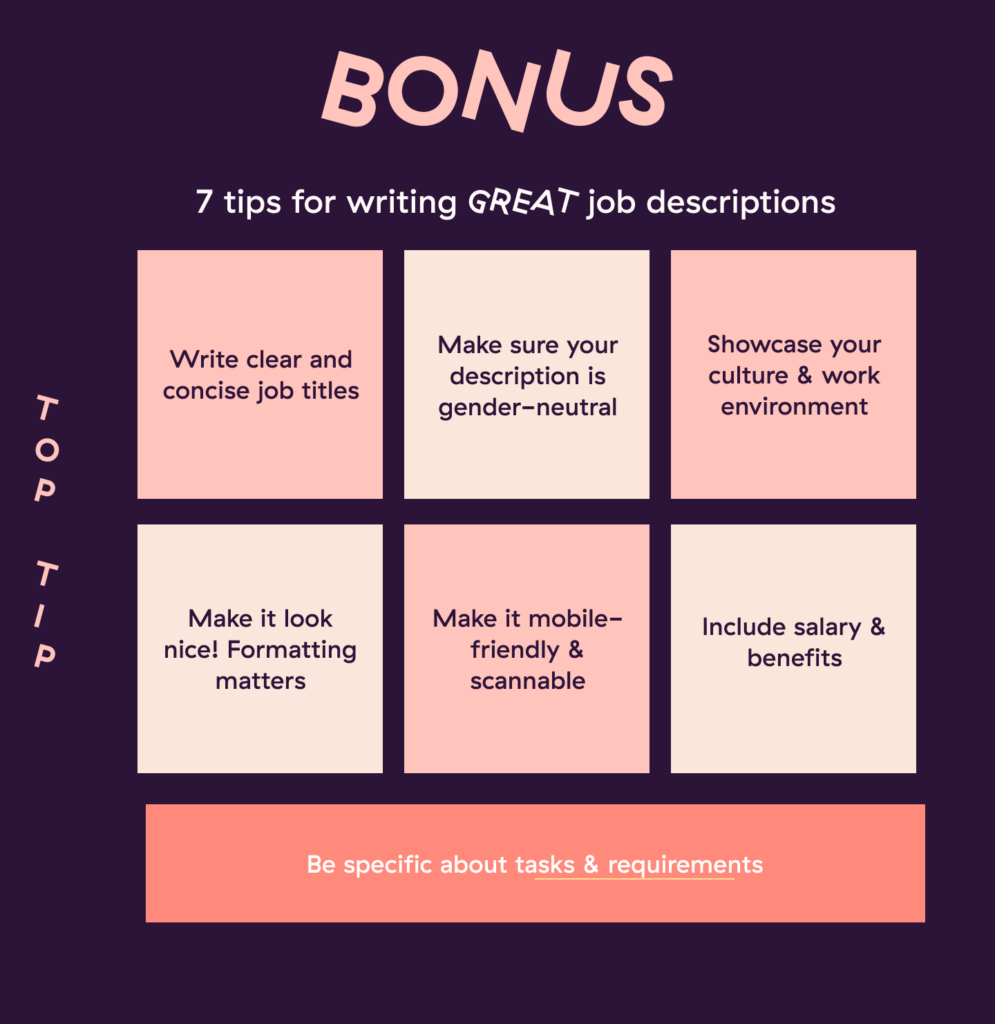
The whole point of conducting a job analysis, besides creating a detailed job description, is to continually streamline and evolve the position with industry changes and organizational growth. Once you have conducted an in-depth evaluation of the job duties and identified skills gaps, remember that your efforts will only stay relevant for a couple of years or so.
AIHR | Source
Identify skill gaps fast with online skills tests
Performing job task analysis may seem like a major investment in time and effort. But, when done right, your team can actually save heaps of time in the overall hiring, employee selection, and onboarding process. Not to mention, ensure current employees are no longer in the dark about what’s expected of them and feel valued.
Another excellent recruiting investment for current employees and candidates is skills testing.
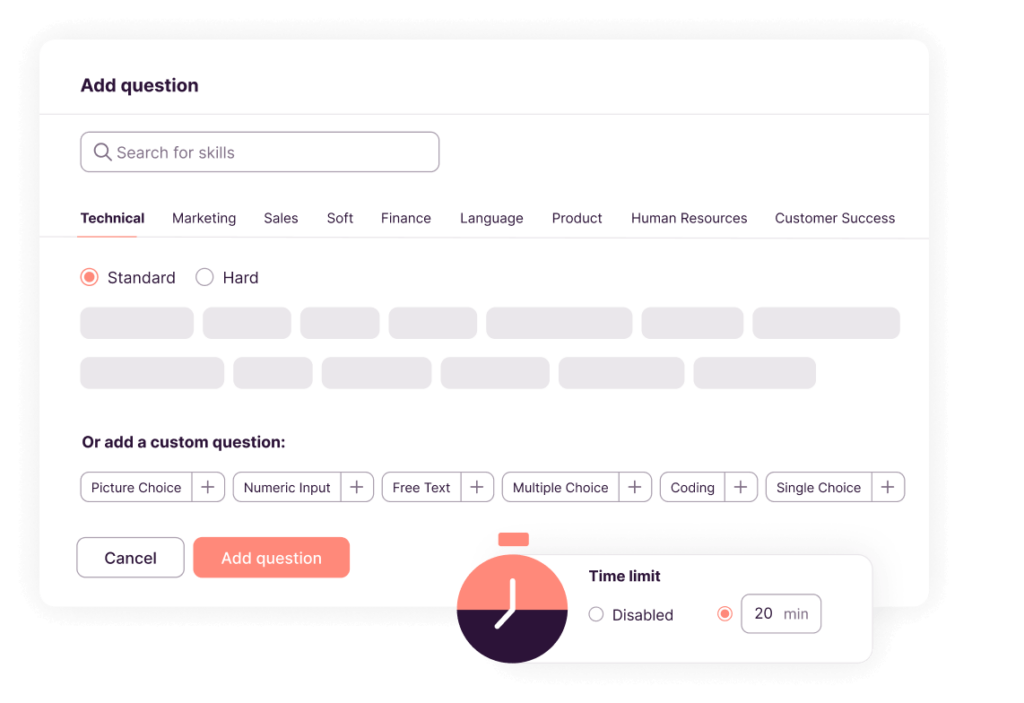
With Toggl Hire’s skills assessments, the whole process is automated, saving your team loads of time. You can create customized skills tests in two clicks and make them role-specific (with valid questions sourced from SMEs!).
Sound good? Oh, you betcha! Take the mystery out of hiring good candidates with our all-in-one skills assessment platform.
Juste loves investigating through writing. A copywriter by trade, she spent the last ten years in startups, telling stories and building marketing teams. She works at Toggl Hire and writes about how businesses can recruit really great people.



